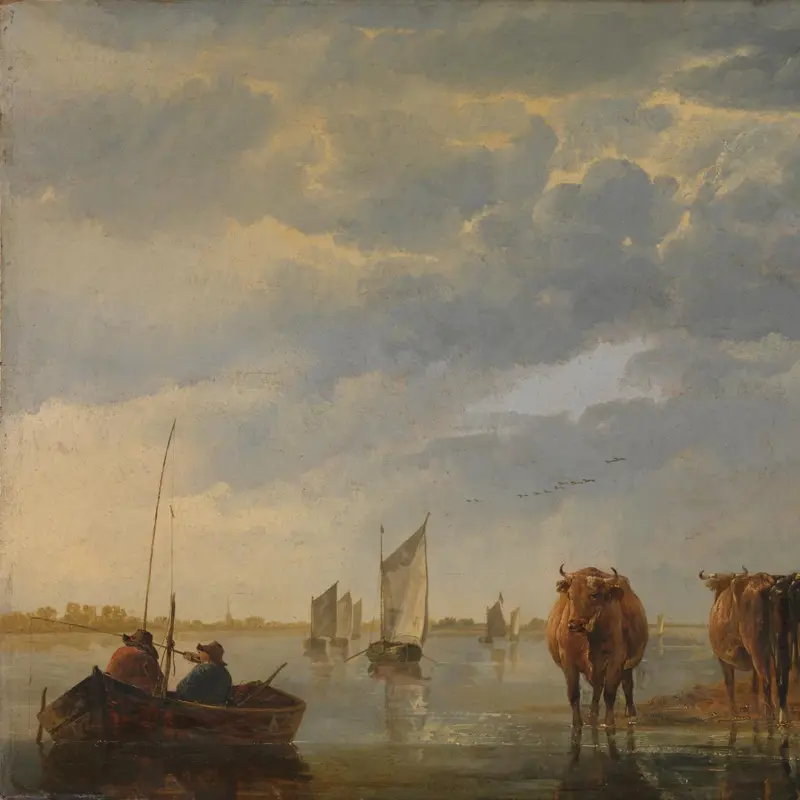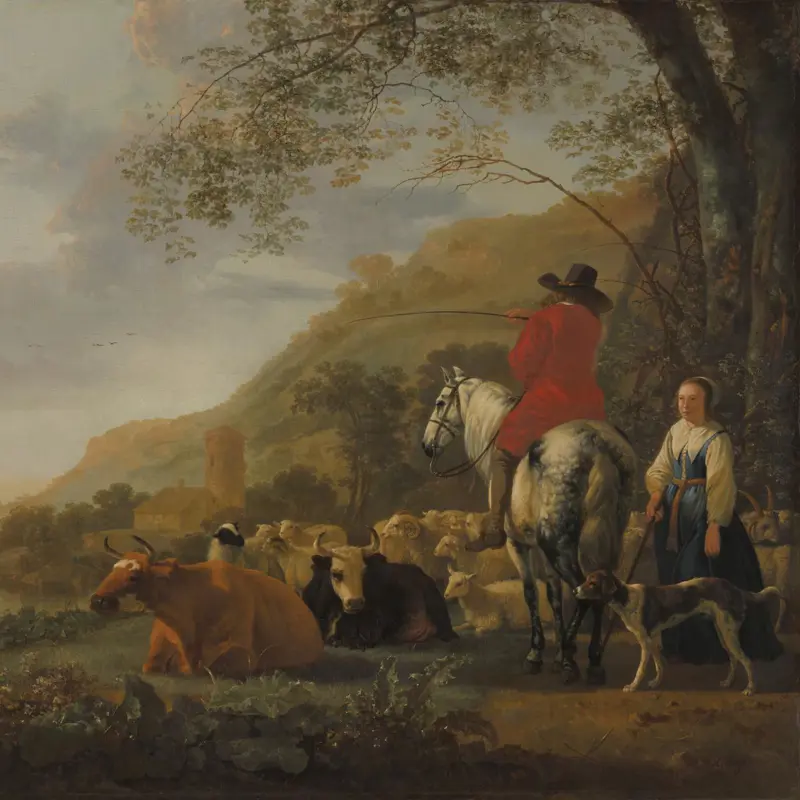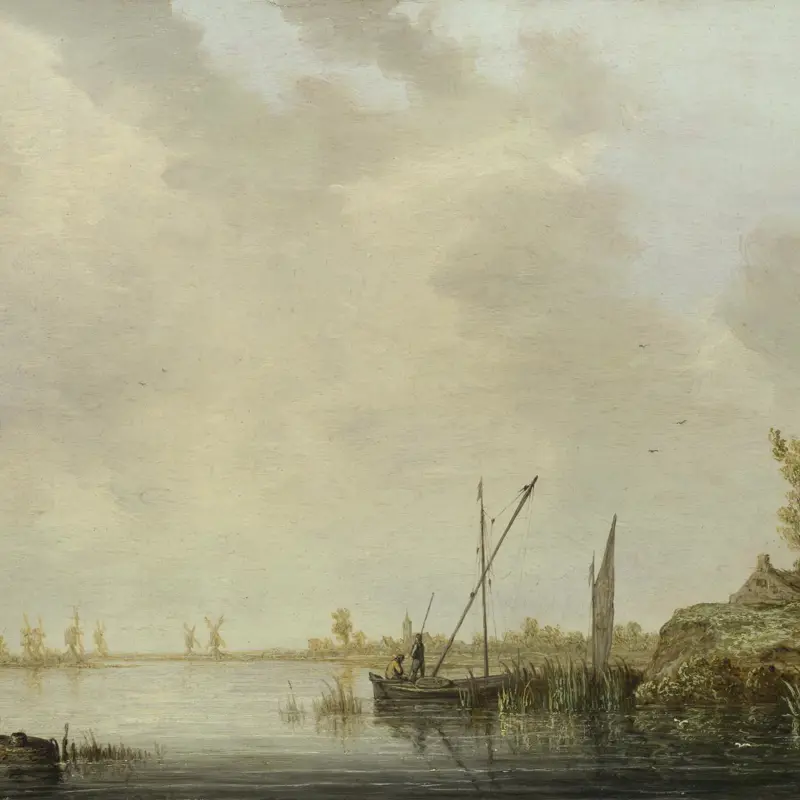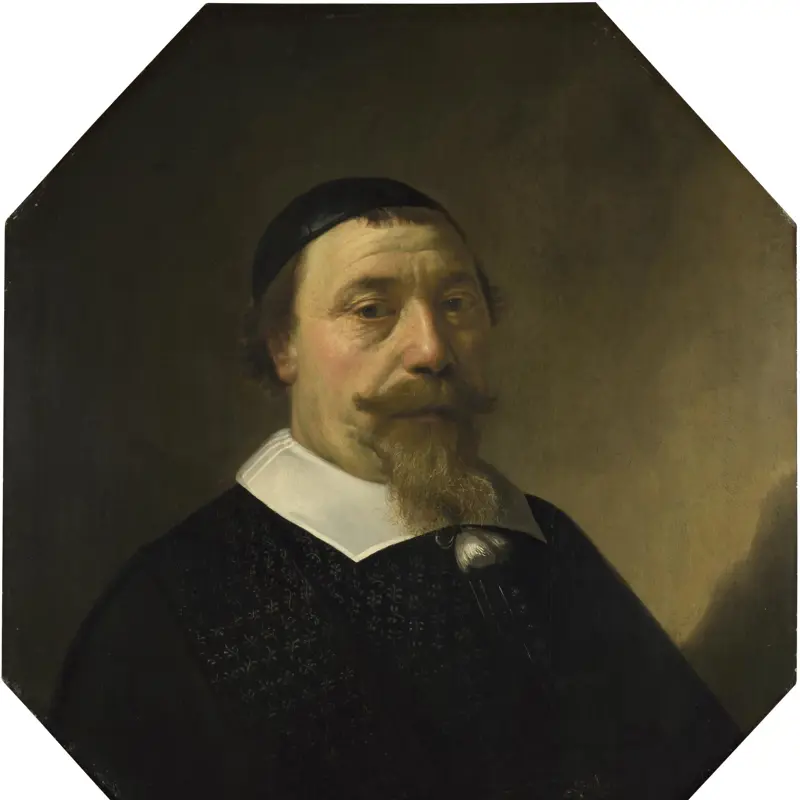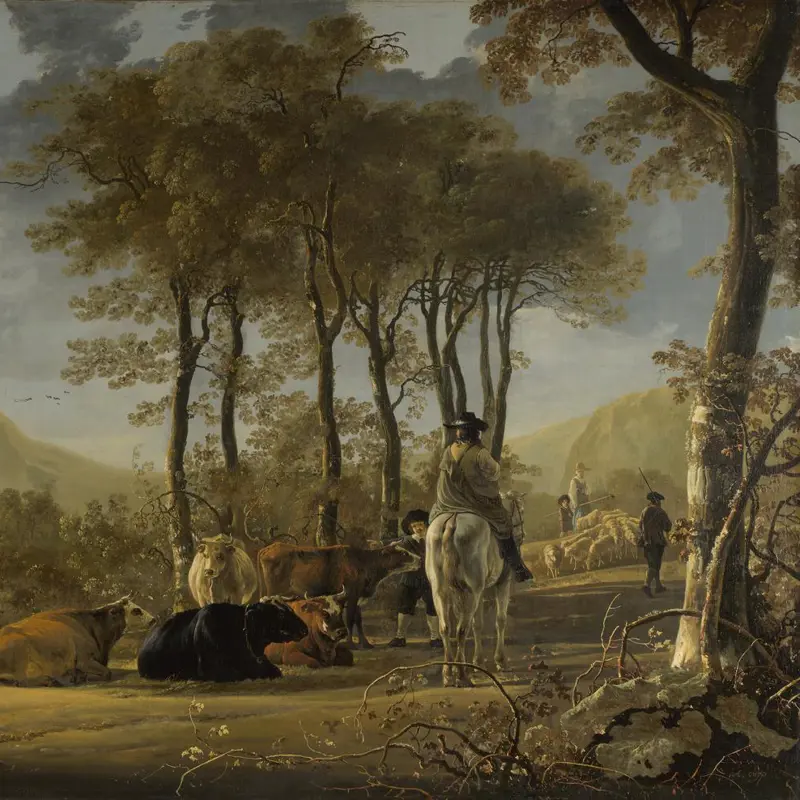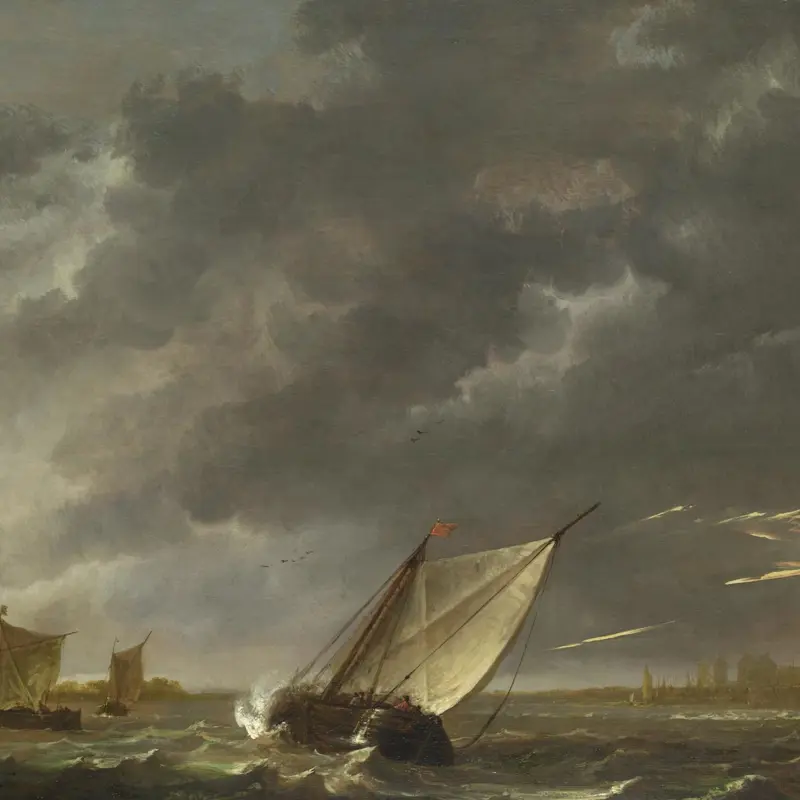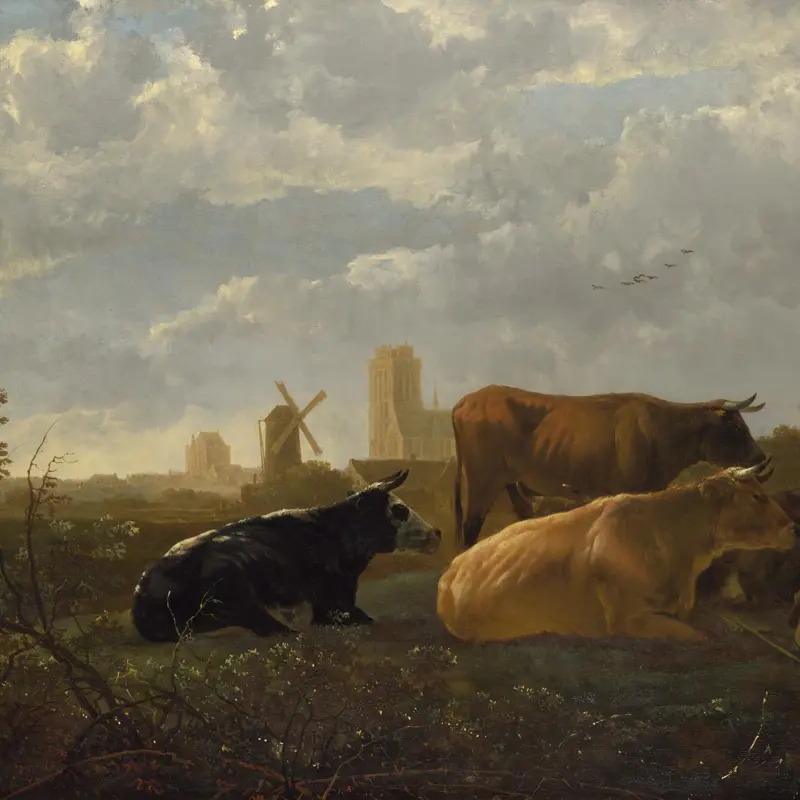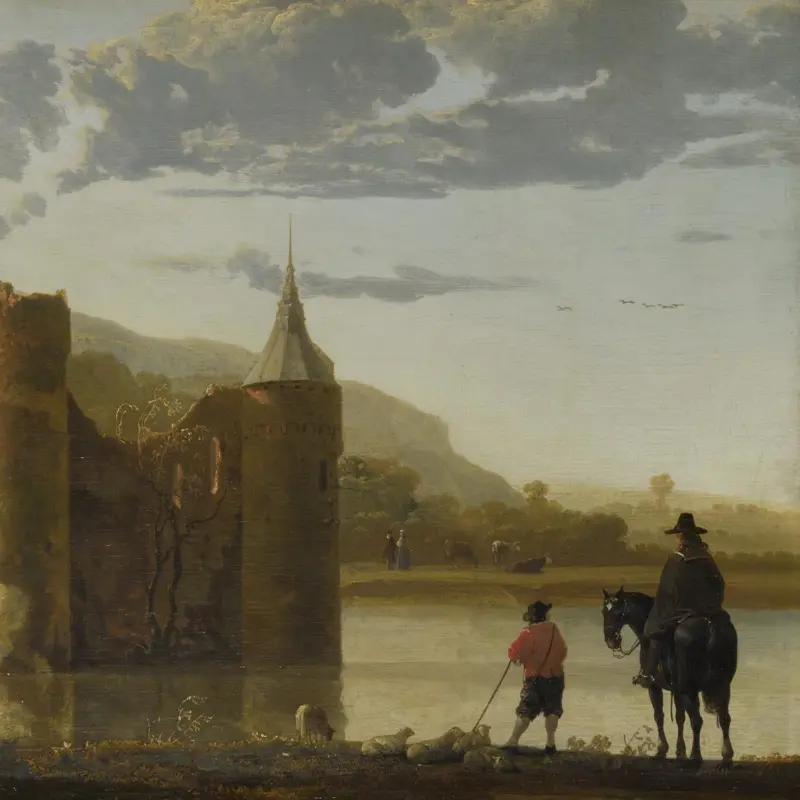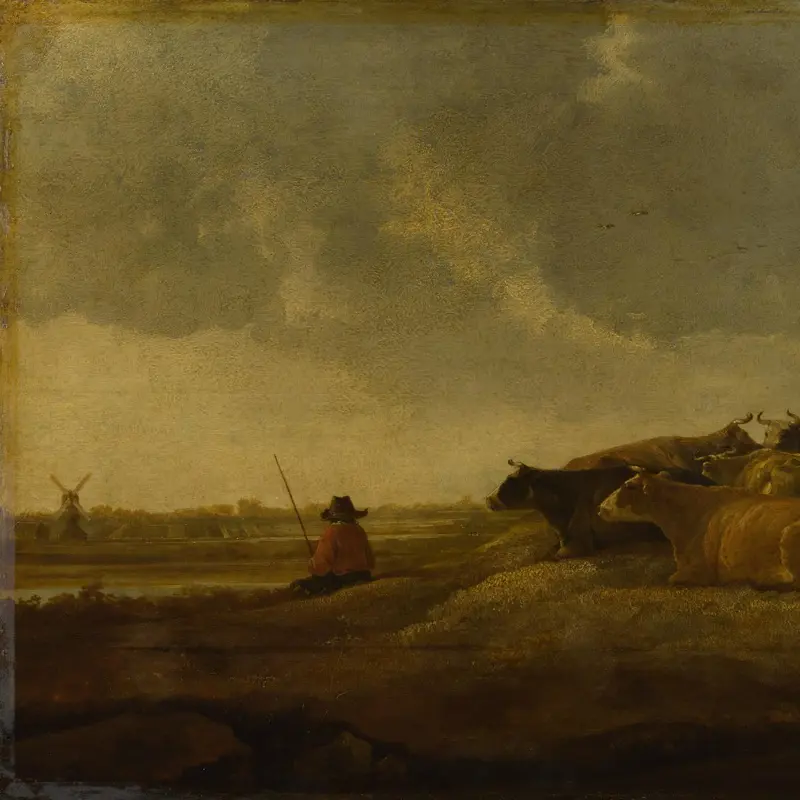Aelbert Cuyp, 'The Large Dort', about 1650
About the work
Overview
Cows often feature in pastoral landscapes, but it is rare for them to be given quite such heroic status as the four monumental brown beasts which dominate the foreground of this large canvas. They relegate the shepherd to the hill and the milkmaid, who funnels the results of her labour into a brass flask, to the sidelines.
But, for the artist and his contemporaries, cows were extremely highly valued. The seventeenth century had seen improvements in breeding stock, better feeding practice and the reclamation of flooded land – low-lying pasture was much better for cattle than sheep. Cheese and butter were not only national staples, they were now key exports. In short, cattle represented wealth, peaceful prosperity and plenty.
Cuyp was famous for his ability to paint such scenes of bovine bliss and this painting is similar to another smaller one, A Distant View of Dordrecht, with a Sleeping Herdsman and Five Cows, which is also in the National Gallery’s collection.
Key facts
Details
- Full title
- A Distant View of Dordrecht, with a Milkmaid and Four Cows, and Other Figures ('The Large Dort')
- Artist
- Aelbert Cuyp
- Artist dates
- 1620 - 1691
- Date made
- About 1650
- Medium and support
- Oil on canvas
- Dimensions
- 157.5 × 197 cm
- Inscription summary
- Signed
- Acquisition credit
- Wynn Ellis Bequest, 1876
- Inventory number
- NG961
- Location
- Room 19
- Collection
- Main Collection
- Previous owners
- Frame
- 18th-century French Frame
Provenance
Additional information
Text extracted from the ‘Provenance’ section of the catalogue entry in Neil MacLaren, revised and expanded by Christopher Brown, ‘National Gallery Catalogues: The Dutch School: 1600–1900’, London 1991; for further information, see the full catalogue entry.
Exhibition history
-
2021In the light of Cuyp. Aelbert Cuyp & Gainsborough – Constable – TurnerDordrechts Museum3 October 2021 - 8 May 2022
Bibliography
-
1907C. Hofstede de Groot, Catalogue Raisonné of the Works of the Most Eminent Dutch Painters of the Seventeenth Century, 10 vols, London 1907
-
1907C. Hofstede de Groot, Catalogue Raisonné of the Works of the Most Eminent Dutch Painters of the Seventeenth Century, 10 vols, London 1907
-
1960Maclaren, Neil, National Gallery Catalogues: The Dutch School, 2 vols, London 1960
-
1975S. Reiss, Aelbert Cuyp, London 1975
-
1978K.J. Müllermeister, Meer und Land im Licht des 17. Jahrhunderts, Bremen 1978
-
1979F. Stampfle, Rubens and Rembrandt in Their Century Seventeenth Century Flemish and Dutch Drawings from the Pierpoint Morgan Library (exh. cat. Institut Néerlandais, 5 April - 10 June 1979; Koninklijk Museum voor Schone Kunsten, 22 June - 9 September 1979; British Museum, 27 September 1979 - 13 January 1980; The Pierpont Morgan Library, 3 April - 31 July 1980), Paris 1979
-
1982D. Gordon, The National Gallery Lends: Paintings of the Warm South by Foreign Painters in Italy in the Seventeenth Century (exh. cat. Herbert Art Gallery, 13 March - 25 April 1982; Derby Art Gallery, 8 May - 12 June 1982; Doncaster Museum and Art Gallery, 19 June - 25 July 1982; Victoria Art Gallery, 6 August - 4 September 1982), Coventry 1982
-
1988C. Boschma, Meesterlijk vee Nederlandse veeschilders 1600-1900 (exh. cat. Dordrechts Museum, 25 September - 20 November 1988; Fries Museum, 3 December 1988 - 29 January 1989), Zwolle 1988
-
1990I. Gaskell, National Gallery Master Paintings from the Collection of Wynn Ellis of Whitstable, London 1990
-
1991Maclaren, Neil, revised by Christopher Brown, National Gallery Catalogues: The Dutch School, 1600-1900, 2nd edn (revised and expanded), 2 vols, London 1991
-
1993A. Chong, Aelbert Cuyp and the Meanings of Landscape, Ann Arbor 1993
-
1994D. Saunders and J. Kirby, 'Light-Induced Colour Changes in Red and Yellow Lake Pigments', National Gallery Technical Bulletin, XV, 1994, pp. 79-97
-
2001
C. Baker and T. Henry, The National Gallery: Complete Illustrated Catalogue, London 2001
About this record
If you know more about this work or have spotted an error, please contact us. Please note that exhibition histories are listed from 2009 onwards. Bibliographies may not be complete; more comprehensive information is available in the National Gallery Library.

